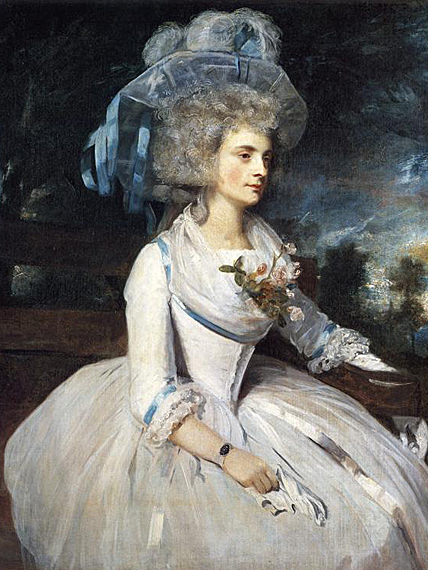Portraits of Flemish painter Anthony van Dyke (1599-1641) are typically dark, a technique typical of the period using a semi-dark background to highlight the subject.
The mastery of van Dyke’s use of black (various shades of it), white and gray is most alluringly presented in the portrait of Frans Synders. Set against a billowing black drapery and enveloped in a rich cascade of black – black doublet lined with a wired, lace trim collar, black cloak – Synders’ elegantly aristocratic face and hands are further accentuated. There is something grand and mysterious with his stare, and, oh, those beautiful fingers…
One should never gape at a painting with less-than-just-admiration thoughts, especially standing in the Frick Collection‘s handsome West Gallery. But you have to admit, he is devastatingly handsome. In fact, Synders (in addition to being wealthy) is a Flemish painter of animals, still live and, often violent hunting scenes. How’s that for having a darker side, Christian Grey?

Van Dyke, “Frans Snyders” circa 1620/oil on canvas (image credit: commons.wikimedia.org)
If you have not yet been to the Frick Collection in the Upper East Side, you should take advantage of its Sunday “by donation” program. Compared to other art museums, the Frick Collection, being the former residence of Pittsburgh industrialist/collector Henry Clay Frick (1849–1919) and a museum, offers an interesting viewing experience. Painting and sculpture aside, the Gilded Age mansion, including ceiling, vase, lamp, furniture, etc., the entirety is art.
Frick, in addition to being a collector of works by the Old Masters, was also a collector of portraits of beautiful women. Among them, I quite adore English painter Joshua Reynolds’ (1723-1392) rendition of Lady Skipwith.
The lady depicted, she married Sir Thomas George Skipwith of Newbold Hall, Warwickshire in 1785, had a reputation as a skilled horsewoman. As opposed to Synders’ black, Lady Skipwith is the absolute, varying degrees of white. Powdered hair included.

Joshua Reynold “Lady Skipwith”, 1787 (image credit: Web)
What I find particularly entertaining was Reynold’s purposeful depiction of Lady Skipwith as the embodiment of melancholy typical of the romantic period. You see, in addition to characteristics like love of nature, sympathetic interest in the past, particularly the medieval, romanticism also extol morbid melancholy. The artist, in an attempt to compliment Lady Skipwith’s morose, pensive expression, painted a brooding, stormy sky as the background.
What if the weather was actually sunny and not stormy? What if Lady Skipwith, a high energy, skillful horsewoman, had wanted to smile? Alas, I suppose one must embrace melancholy for the sake of art.
The Frick Collection 1 E 70th St, New York, NY Adults $20/Seniors $15/Students $10, children under 10 are not admitted
